A long standing community partnership
Cambridge Science Centre continue their long-standing partnership with North Cambridge Community Partnership (NCCP) to enhance the North Cambridge community’s connections with science centre, STEM, and the world-class STEM work carried out nearby in the city.
Bold Futures programme January 2023:
Who did you work with?
Cambridge Science Centre worked with the North Cambridge Community Partnership (NCCP). NCCP brings together the wards of King’s Hedges and Arbury in the north of Cambridge, represents the needs and wants of the community, and supports community events and clubs. These two wards are high on the Index of Multiple Deprivation and are a community that have limited capacity to visit our Centre. We engaged with NCCP in their community space so that we could engage without limitation.
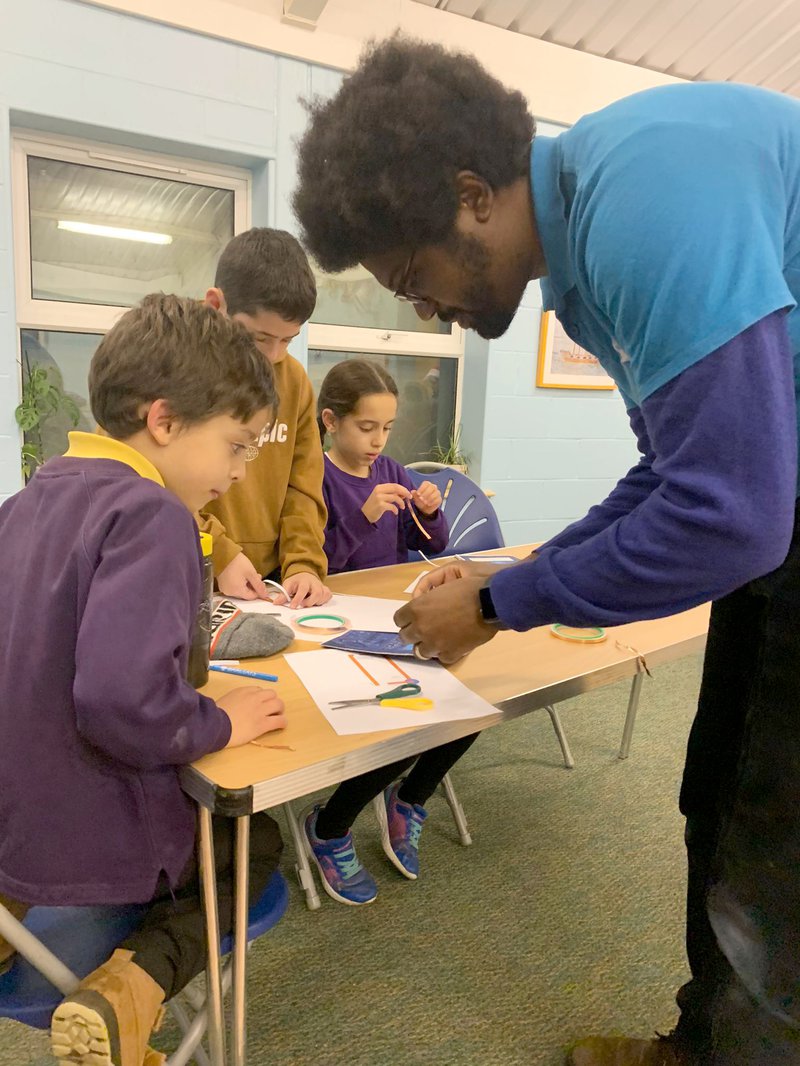
Had you worked together before?
We had not worked with North Cambridge Community Partnership prior to EYU4, but we have continued to work with them since.
What goals, values or priorities did you share with your partner that meant you worked well together?
We are both focussed on engaging young people from the community in a community space and want the young people to have the ability to shape that engagement. We also share a view of the importance of STEM for young people. We were, therefore, able to utilise each other’s strengths to achieve the goals of the project.
Can you summarise the aims of your project delivery in 2(ish) sentences?
We wanted young people to develop research skills and so become more confident in answering their own questions. In addition, we wanted the group to improve their ability to explain complex ideas so that they could express their ideas to others more easily. We did this by giving them ownership of a bespoke issue of our OpenUpScience. The creators had full control over the issue – deciding the topic, researching, and producing the content – and this was recognised in the magazine, which was then sent to over 2,500 homes and 130 schools.
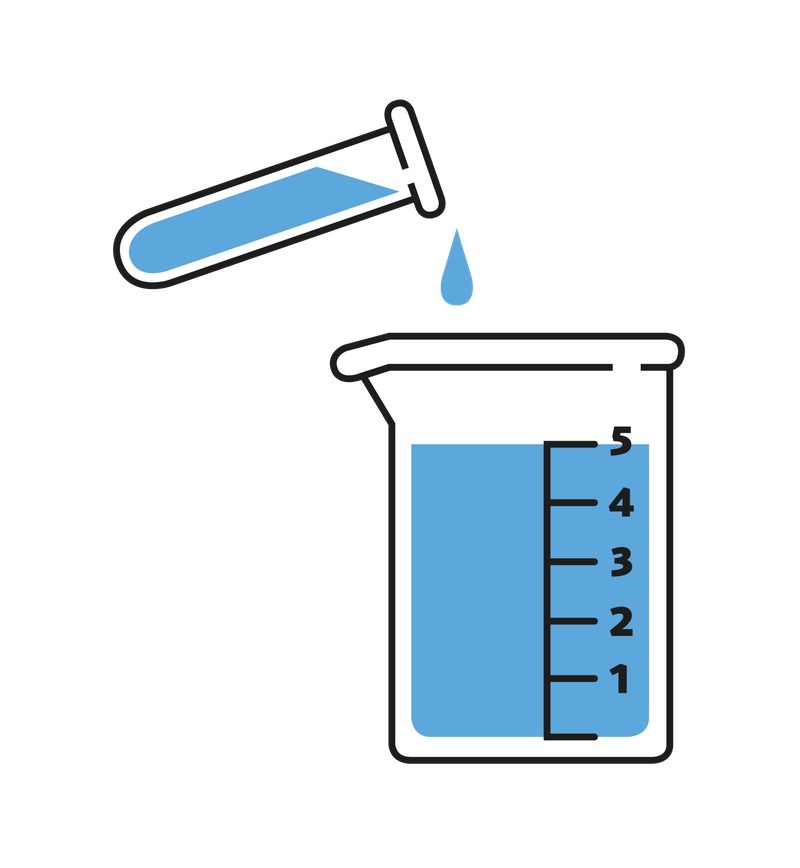
How co-produced was your programme?
- Information shared (the offer is decided and provided by you as the lead partner and people join to hear information)
- Consultation (the community partner/participants choose from a range of options, involving listening, feedback and discussion, but broader project objectives and delivery are led by you)
- Deciding together (community partners/participants support the creation and design phase, bringing new options and joint decision-making. Delivery and evaluation/reporting is led by you as the lead partner)
- Acting together (involvement of community partner/participant at each stage - from the planning and design, to the delivery and evaluation – with shared decision-making that forms a partnership to carry out the full programme)
- Supporting independent community interest (supporting partner agency, including offered funding, advice, and support to develop the independent ideas and agendas of the community partner).
We incorporated co-production both with our Community Partner, NCCP, and with the young-people who created the magazine. We spent time with NCCP to discuss the EYU4 framework and look at the possibilities. It was over time that we focussed in on what became the final offer and how that benefitted both parties. The sessions were run in an open manner, with all decisions being finalised by the young people in discussion with us and each other.
Can you note down some of the benefits and challenges to working this way?
A key benefit of this collaborative project has been the formation of a strong working relationship with NCCP. With a high level of ideas-trading centred around a common purpose, but with each organisation bringing different expertise to the table, we feel we have learned a lot from each other. We have been able to discuss options more collaboratively and coherently, resulting in an on-going STEM Club in the community. Challenges came from wanting to give NCCP full input but there being limitations to what we, as a science centre, could offer. However, we have developed a dynamic where ideas can be suggested from our respective points of view without the feelings from either side that we are being told what should happen. An on-going challenge is to balance the individuality of the needs and work we do with NCCP while ensuring our investments are linked with our broader programmes so that we can increase the impact of everything we offer.
“Cannot say how splendid it is working with Science Centre team, we are fully supported by their experience, knowledge, equipment and most importantly the professional science communicator’s sense of fun! NCCP is privileged to accommodate this sustainable setting which brings life changing attitude to young members of North Cambridge. The cooperative projects have been hugely welcomed by local community: preparing an edition of OpenUpScience magazine, enjoying the science shows and experimenting new topics in each session are prime examples."
NCCP staff member
What was the science link?
The young people were given the parameters of our OpenUpScience magazine but were then given free rein to define how these were applied and what topic was addressed. Science knowledge and skills were then developed in the context of supporting the young people as they structured ideas, researched their topic, and communicated their findings. This was complemented by giving the young people the opportunity to consider the magazine’s design and how to communicate the STEM concepts covered in the magazine articles. Alongside this space to learn about the science, the young people learnt how to communicate technical concepts in a clear and engaging way to a non-expert audience, developing an important life and career skill. Our Team had a lot of learning to do while the sessions were running. We have not run such open-ended sessions previously. We did not know how the young people would approach or engage with the project, nor did we know what topic they would pick. We had to respond rapidly to unknowns. This was a concern in advance, but the experience helped us realise that this style was an extension of what we had been doing and did not result in anything outside what our team can handle.
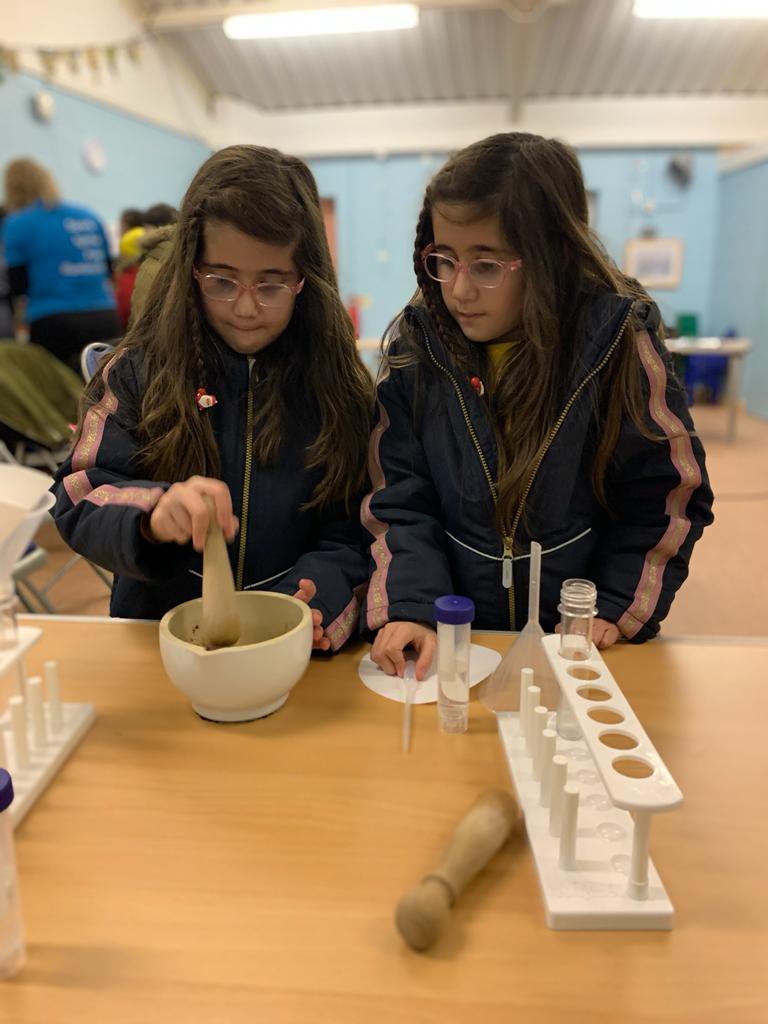
What happened?
The magazine was distributed as the first issue of the academic year 21/22, and was sent to ~2,500 homes as a hard-copy edition and 130 schools as a digital edition. If we are to reach those most in need of STEM educational interventions, we cannot assume they have equal access to technology and the hard-copy edition addresses this digital divide, which is something that is a factor in the NCCP community. In addition, a special event was held at our Centre to unveil the magazine to the young people’s families. The magazine was launched to the community during NCCP’s summer event. The most positive aspect of this project is that the relationship between the CSC and NCCP has continued beyond the successful delivery of this project. We now run a weekly STEM Club in the community and NCP and CSC are working together on funding opportunities to continue our partnership.
What challenges might lie in wait for someone wanting to replicate this project?
These projects require a period of careful planning before implementation. This time was useful in allowing the relationship between CSC and NCCP to form and increasingly open discussions to happen that truly reflected both sides’ capacities and needs, rather than idealised wants. Funding is important to help support any kind of delivery but an extended period of low-level delivery was really helpful. The challenge is having such relationships without support or justifying long, quiet periods to supporters. Time was again important during the OpenUpScience magazine co-creation. We had spent a long-time considering what we would do, so the basic concept seemed simple by the time we started delivery. However, we then underestimated the time the young-people needed to understand, consider, and take ownership and action on the magazine. We adapted our plans to allow more sessions to focus on identifying what the magazine theme would be and what could be developed for it. Ultimately, we spent less time on the content production, but that initial thinking time meant the production time was more efficiently used. But, our key message would be: don’t be scared about attempting a project like this yourself! This project has helped us form a key community partnership, make a demonstrable positive impact with our core audience, and has taught us a lot about co-development. If you want to try something like this yourself, we would be very happy to offer you thoughts from our experience. Don’t hesitate to get in touch!
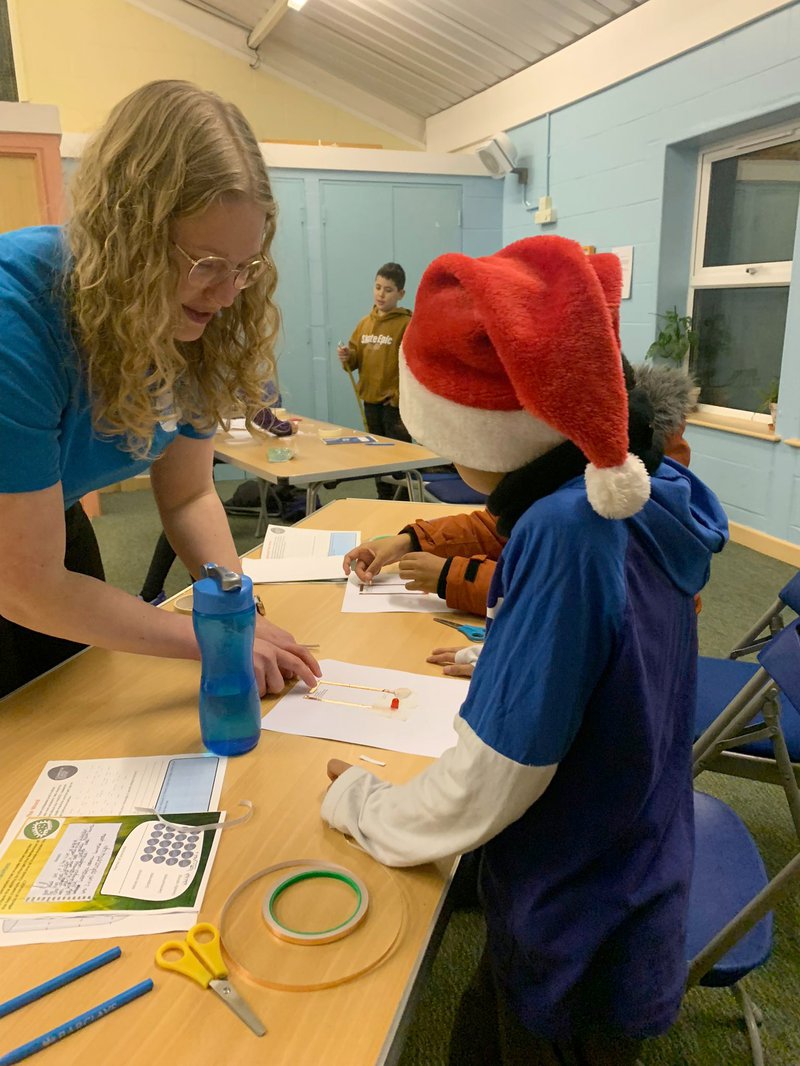
Were there any surprises?
The pandemic resulted in the development of the OpenUpScience magazine to help us reach families with poor access to technology, and that magazine ended up providing us a fantastic framework for a co-development project with young people. Prior to setting up the OpenUpScience magazine, our co-development projects had struggled from being too loosely defined, making the collaborative process difficult to initiate and progress. With OpenUpScience, the clear structure, tangible output, and established audience of thousands provided both a format in which the young people’s creativity could be unleashed and provided the motivation of being able to see the results of their work in action. Once we had this project and end-goal in place, every session of working with the young people was a positive surprise and a huge learning opportunity. But no matter what ideas popped up in our working sessions, we always found a way to bring things together. And the end result was outstanding!
"Thank you, Science Centre, for being a wonderful partner and bringing this favourable opportunity to our younger generation to explore, imagine and practice team work. Specially during the crucial Covid period that modern lifestyle hugely relies on digital communications and it is immensely valued to be offered the chance to take part in hand-on activities.”
NCCP staff member
How did you capture/measure the impact for this project?
We used the EYU4 tools specifically for this project. The reflective diaries for our staff were particularly useful. To make the evaluation seem like part of the process for the young people, we were very open that this was the first time we had run anything like these sessions and that their ideas and thoughts would help us improve. Each child got a folder in which they kept both their evaluation sheets and their research notes and magazine concepts. This again gave the young people greater ownership and we think we got a more honest input from everyone as their input was constructive, rather than a metric.
Where is the long-lasting change?
Yes, our relationship with NCCP has led to an on-going STEM Club running in their community space. This started without any break after the end of the EYU4 project. As part of this, NCCP is working with us to identify and apply for funding to support the club. In addition, we are often running ideas by each other and considering new options and opportunities. Further, with our experience in collaborative development with a community partner and young people, we are now exploring other opportunities for co-development within Cambridge Science Centre.
Explore Your Universe: Valuing Inclusion, February - June 2024
Inclusive Outcome areas: Agency & Ownership, Belonging, Social connection
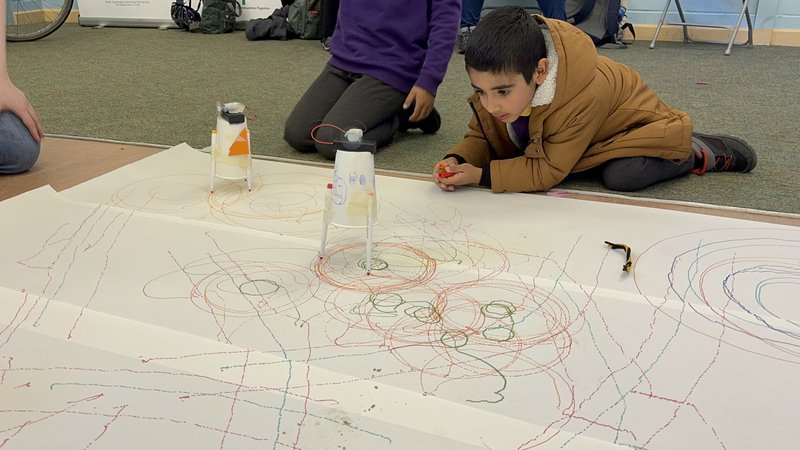
Cambridge Science Centre continued their long-standing partnership with North Cambridge Community Partnership (NCCP) to enhance the North Cambridge community’s connections with science centre, STEM, and the world-class STEM work carried out nearby in the city. The project focussed on the engagement of the ~15 young-people who are members of an ongoing STEM Club run with NCCP that was initiated by previous EYU support, exploring the relevance of STFC science to everyday life and craft an environment and content to allow young-person led exploration of these relevancies. Cambridge Science Centre delivered 11 workshops in total for 8-11 years olds, covering topics such as robotics, space environments and research skills, data-driven decision making, and creative communication.
The project included local STEM professionals and students working with the club members, with a focus on the members redefining how they want the club to run and what it should focus on. Cambridge Science Centre believe it is critical that young people and the community partners have an agency and, thus, ownership of the science centre’s programmes and spaces so that they can build a sense of belonging within a science venue and drive social connections with STEM industries. Using STFC astronomy and space science to pose a challenge of how humans can live on the moon, Cambridge Science Centre ran two open-ended 6-week STEM Clubs that asked young people to identify problems, test solutions, report solutions, and pose follow-on questions, expanding on the co-creation format initiated in the EYU4 project.
Through these group-guided sessions, they consulted with the members on how their new Centre, which was opening towards the end of this programme, might host future club iterations and be a regular destination as a fun, STEM-based community space. They wanted to support the development of a social connection between the residential area of Kings Hedges and Arbury and the industrial Science Park using the development of a new permanent science centre as a gateway for residents into the Park.
When asked if they noticed a change in the children, the community partner reflected:
“Yeah, I can feel when the children come in through the door, I can feel like they're very confident they know it's their place and it's their belongings. The children are coming every week smiles on their face, building a sense of belonging. It’s their space…they have their own little world there.” – Community partner at North Cambridge Community Partnership
Please see below the Explore Your Universe: Valuing Inclusion report by Jen DeWitt and Sophie Bartlett. This report delves into the findings from the grant programme and how effective the 6 inclusive outcome areas were.
